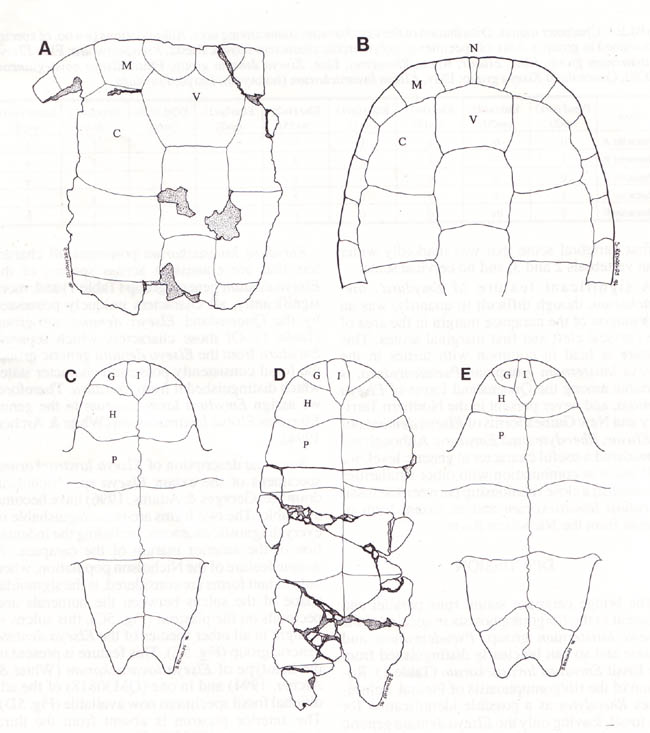

|
Memoirs of the Queensland Museum (1997),42(1):327-336 |
Figure 5.A-B Dorsal view of the anterior carapace of short-necked turtles showing the relative size between the vertebral scutes (V) and the presence or absence of the cervical scute (N) their relationship to the costal scutes (C) and marginals (M). Note the indentation at the anterior of some taxa. A, Elseya lavarackorum (fossil) (QM 24121); B, Emydura subglobosa (UC 0172). C-E Ventral view of the plastrons showing the arrangement of the sulci between the humeral (H) and pectoral (P) scutes, also shown are the gular scutes (G) and the intergular (I).C, Elseya lavarackorum (extant) (QM 46284); D, Elseya lavarackorum (fossil) (QM 24121); E. Elseya dentata (QM 59277).
|
Navigation: Page 1 Page 2 Page 3 Page 4 Page 5 Page 6 Page 7 |
